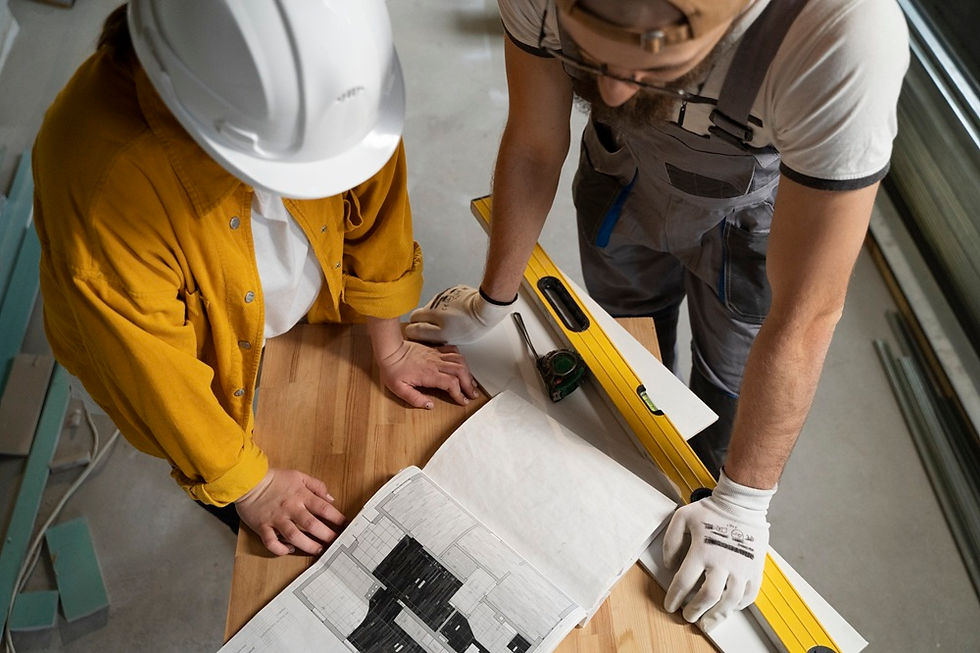Understanding the Magic of Hydro Excavation: Process and Payoffs
- Anna Wrench
- Dec 13, 2023
- 3 min read
Updated: Nov 5, 2025
Have you ever wondered about the complexities of excavation and construction? The intrigue behind the unseen layers of the earth? Or perhaps, you are curious about how new technology has revolutionized this ancient profession? Welcome to a journey that will delve into the marvel of Hydro Excavation, combining the elemental forces of water and air to excavate with precision, safety, and reduced environmental impact.
Hydro excavation, a process often referred to as "non-destructive digging", offers an innovative and enlightened approach to excavation. From revealing underground utilities with little risk of damage, to fostering remarkable efficiency in soil removal, the technique is revolutionizing the game. This blog post is aimed at peeling back the layers of this fascinating process, its application, its benefits and, critically, why it should be your go-to method for efficient, safe, and eco-friendly excavation.
Whether you're an industry professional looking to update your practices, a homeowner planning a massive landscaping project, or someone simply curious about the ins and outs of construction, this comprehensive guide will walk you through the extraordinary world of Hydro Excavation.
The Ins and Outs of Hydro Excavation
Hydro excavation uses pressurized water to break up soil, while a high-powered vacuum lifts the slurry up and away from the work area. The result is a surgically precise excavation with minimal disruption to the surrounding area, a far cry from traditional methods.
Gone are the days of backhoes and shovels potentially causing damage due to their cumbersome nature. Instead, hydro excavation presents a kinder approach to the earth, lauded for its accuracy, and its ability to minimize the risk of damage to hidden utilities and the environment.
The impressive process has earned its place in complex projects requiring precise work, such as pipeline and cable locating, potholing, and the installation of signposts and fencing where knowing exactly what lies beneath is critical.
Advancing Excavation with Precision and Safety
Among the foremost benefits of hydro excavation, accuracy and safety top the list. Traditional excavation methods can often lead to unintended disruption or damage of buried services, resulting in costly repairs, delays and, in some cases, dangerous accidents.
Hydro excavation dramatically reduces this risk. The exactness of the work significantly increases the safety of workers, and the less invasive method minimizes potential damage to infrastructure and property.
This emphasis on safety and precision has made hydro excavation a game-changer in the construction industry, surpassing traditional methods in reliability and efficiency.
Eco-Friendly Excavation: A Sustainable Approach
In an era of increasing environmental consciousness, hydro excavation shines as a sustainable alternative. Traditional methods can substantially change or disrupt the landscape and damage fertile topsoil.
Hydro excavation reduces environmental disruption significantly, by surgically removing only necessary material and causing minor disturbances to surrounding areas. Additionally, the method creates less noise pollution than traditional forms, which often involve loud, heavy machinery.
With such an eco-friendly approach, it's clear why hydro excavation is fast becoming the excavation method of choice for many environmentally conscious stakeholders.
The Crucial Role of Technology
None of this would be possible without advancements in technology. High-pressure water jetting, powerful vacuums, and the innovative use of heated water in cold climates have all contributed to the revolution that is hydro excavation.
Intricate control systems allow for optimal performance and safety. IoT(Internet of Things) advancements are propelling the industry even further, with potential for automated, remote-controlled operations on the horizon.
The Downside of Hydro Excavation
While it appears advantageous in most aspects, hydro excavation does have potential downsides. Notably, the method requires the transportation of water to the site, potentially ruled out in arid regions with scarce water resources.
Also, clearance for disposal of the non-hazardous wet waste can become problematic. However, new solutions are emerging to tackle these challenges and ensure hydro excavation continues to thrive as a leading approach in the industry.
Conclusion
Hydro excavation, despite potential challenges, presents an exemplary alternative to traditional excavation. Its precision, safety, reduced environmental impact, and technological advancements are transforming the excavation industry while ushering it into a sustainable future.
Whether considered from the viewpoint of a worker prioritizing safety, a project manager seeking efficiency, or an environmentalist conscious of the footprint left behind, hydro excavation ticks all the boxes — and then some.
In a world that is rapidly embracing the need for sustainable and conscientious practices, hydro excavation offers a front-row seat to meet and surpass these expectations. Its innovative approach is paving the way for high-quality excavation work, that respects both humans and our shared environment. Intrigued? Good! Start exploring hydro excavation, and dig into an enlightened and sustainable future.




Comments